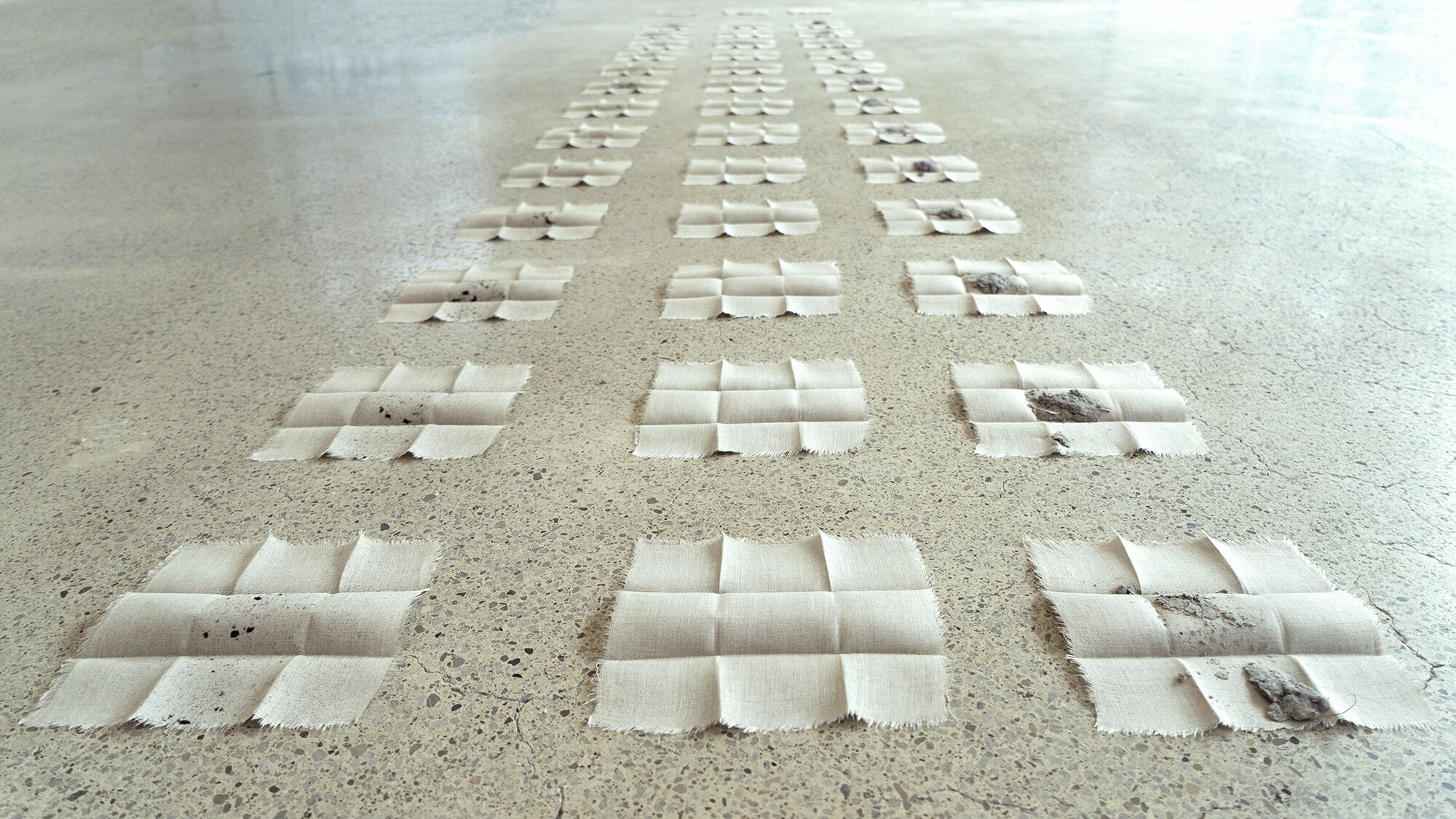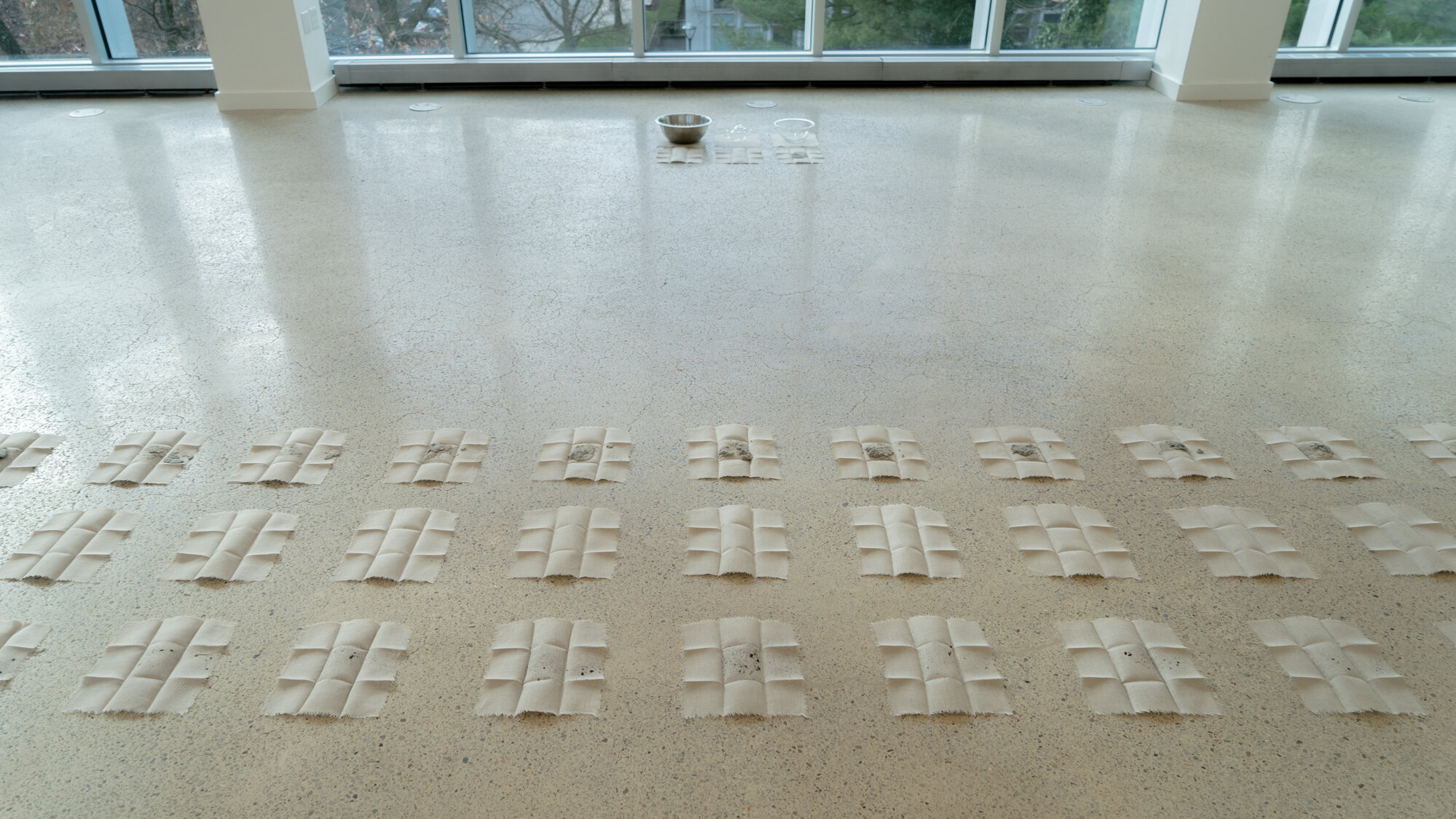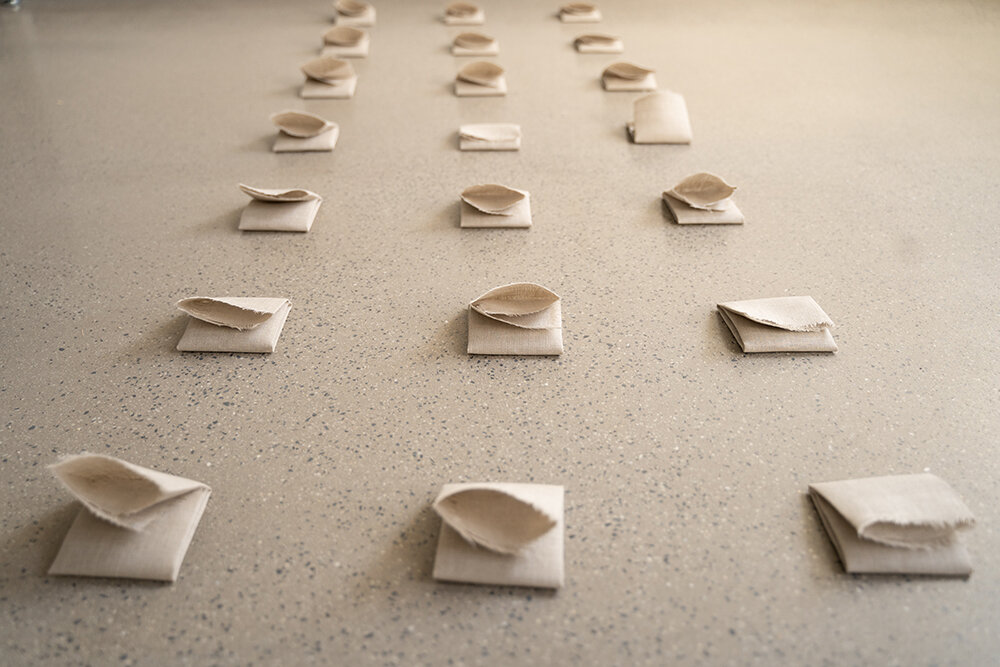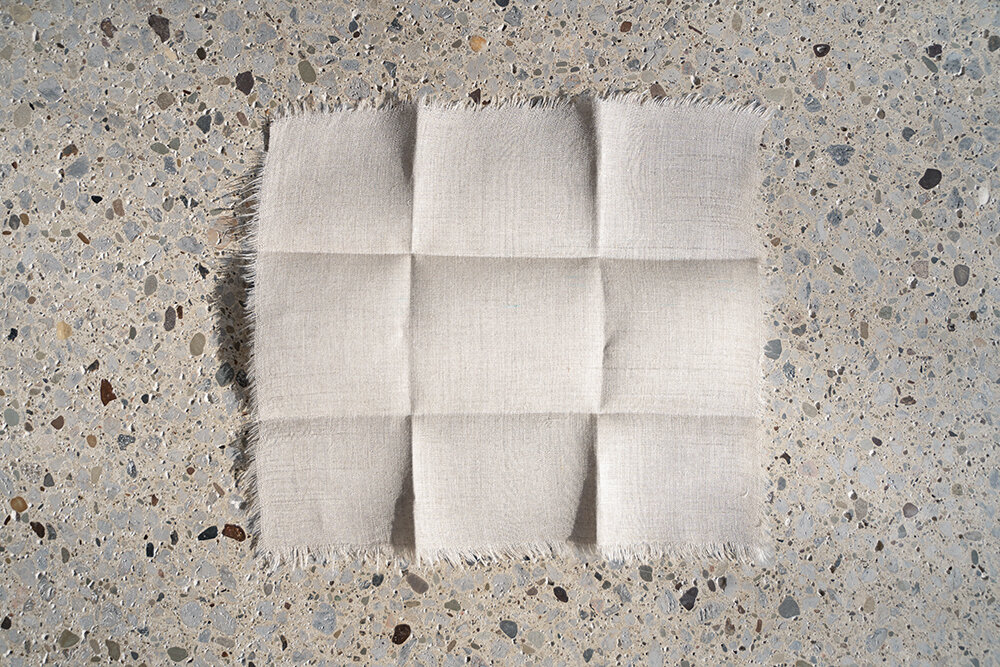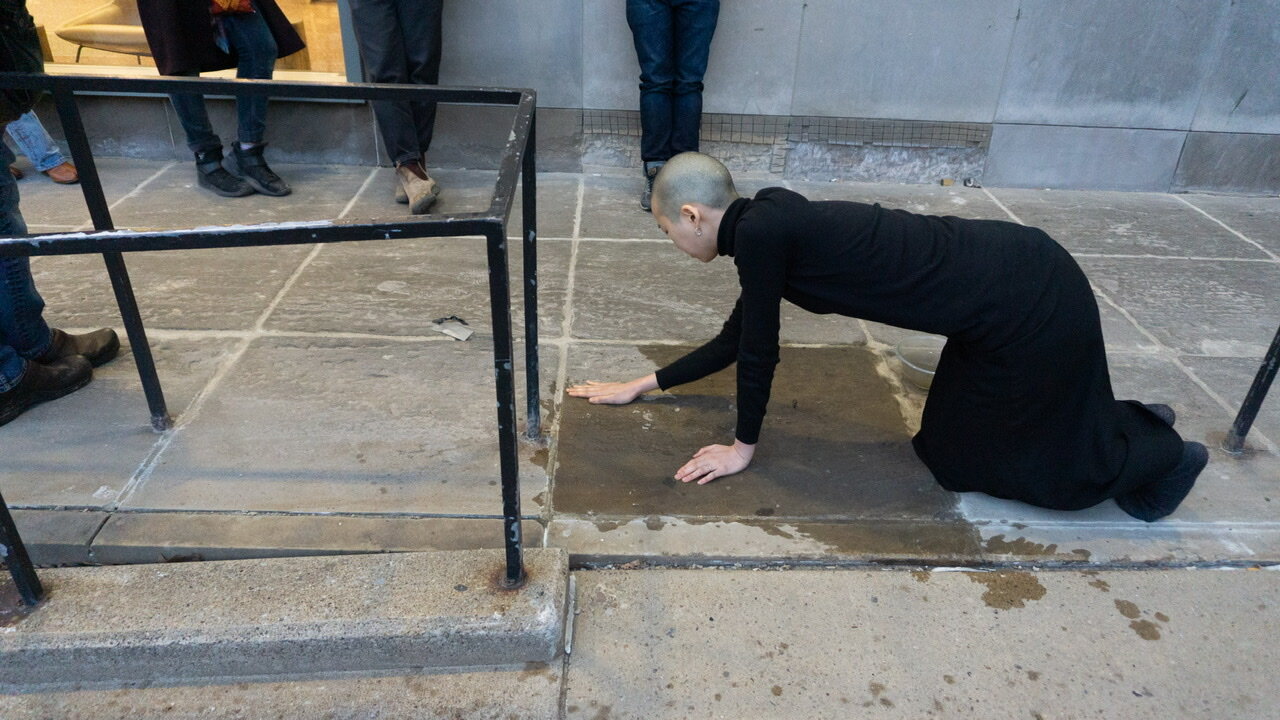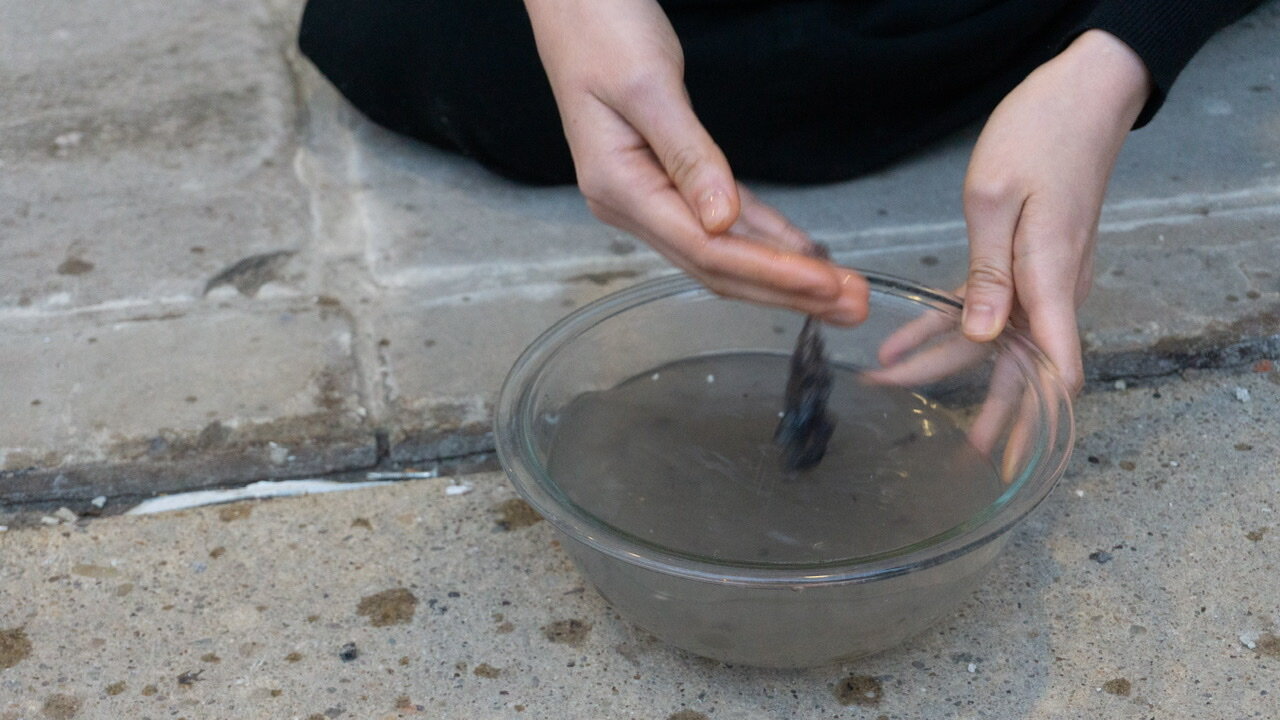I to Others
Yejin S. Lee (2020)I to Others by Yejin S. Lee :: Supported by FRFAF (#2020-052) from STUDIO for Creative Inquiry on Vimeo.
Every day, I vacuumed my home, shaved my hair, and filed my nails. Each day, I collected and distributed the separated residue onto three separate pieces of natural linen fabric. Initially, these collections remained distinct bodies, but not forever. Eventually, the residue of the body and the space it fleetingly occupies will scatter—dissolving into dust, merging within and beyond the surrounding environment and becoming part of others.
Physicists say that the subatomic particles that compose the whole universe are eternal. They “appear to be” born from the moment they gather, die and scatter anew. However, I see no distinction between birth and death. Everything, including the self, repeatedly contracts and expands, gathers and scatters, emerges and fades in response to constantly changing conditions.
The idea of self and the language attached to the concept of self—with words like “my,” “me,” and “mine”— assumes the existence of a rigid boundary between the self and the other. In Buddhist philosophy, however, the true nature of self exists in a field of emptiness derived from its impermanence. Nothing is permanent as everything is always in a state of transition; therefore, emptiness pervades because nothing can be fixed in time and space.
I To Others diminishes the boundary between myself and others. The others include matters and ideas that are not treated like me and mine. Every day, I vacuumed my home, shaved my hair, and filed my nails. Each day, I collected and distributed the separated residue onto three separate pieces of natural linen fabric. Initially, these collections remain distinct bodies, but not forever. Eventually, the residue of the body and the space it fleetingly occupies will scatter—dissolving into dust, merging within and beyond the surrounding environment and becoming part of others.
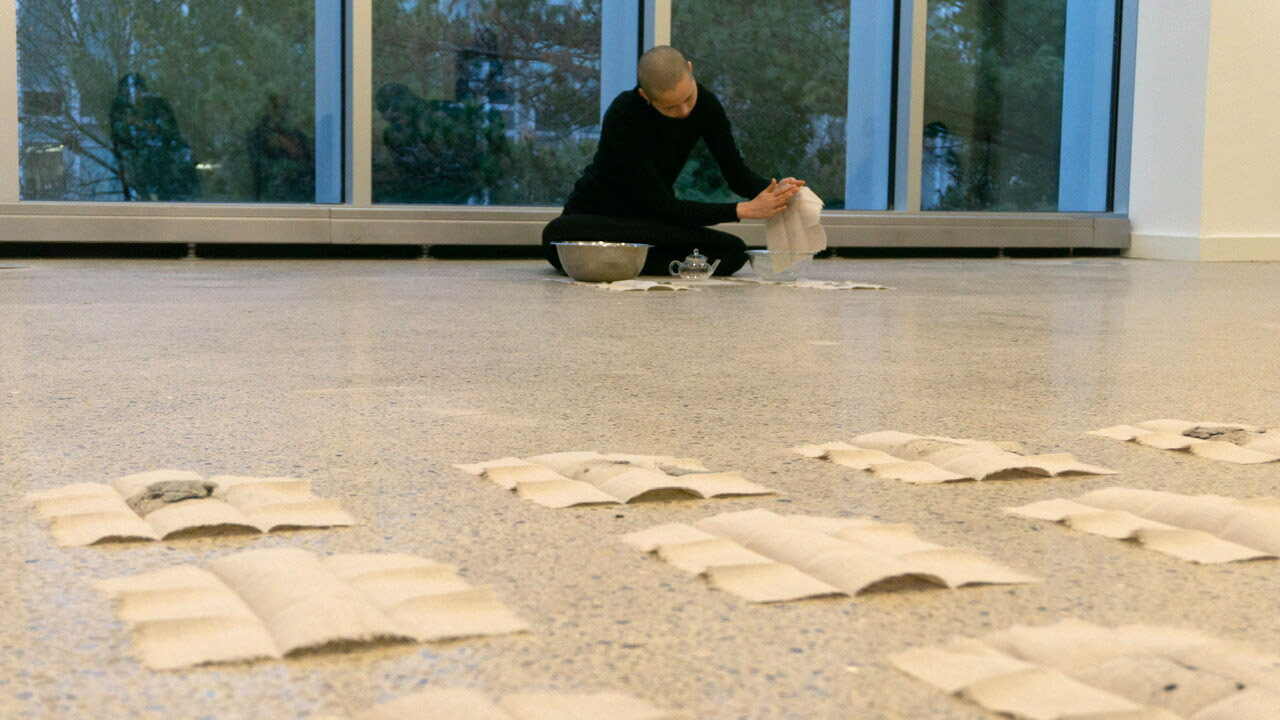
Closer to Nothing
The more often I collect, the smaller amounts I gather.
The smaller amounts I gather, they are closer to nothing.
The more exposed they are, they are more open to change.
The more open to change, they are closer to nothing.
The closer to the floor, they are easier to step on than to see or touch.
The easier to step on, they are closer to nothing.
The less attachment to my body, they are closer to others.
The closer to others, they are closer to nothing.
The closer to dust, they are closer to death.
The closer to death, they are closer to nothing.
I to Others was created by School of Art MFA student, Yejin S. Lee, with the support of Microgrant #2020-052 from the Frank-Ratchye Fund for Art @ the Frontier.
